A 50-year-old male living in a small town in rural Alaska presents for diabetes follow up. This patient has a history of hypertension and diet-controlled diabetes.
This case will guide you through a clinical encounter to understand the patient's health challenges – and how to respond.
LEARNING OBJECTIVES
Identify how global environmental changes directly and indirectly affect food security
Explain the impacts of food insecurity on human health
Understand what constitutes a “planetary health diet” – accounting for both environmental and health impacts of nutritional recommendations
Describe how global food systems contribute to global environmental changes, including climate change, and the co-benefits of a carbon-reduced diet
CLINICAL COMPETENCIES
Combine information obtained using validated tools with knowledge of local diets and food sources to identify patients with food insecurity
Assess environmental and structural barriers to food access and dietary diversity
Apply clinical evaluation skills to detect signs and symptoms of malnutrition
Propose evidence-based and culturally appropriate dietary interventions that take into account both health and environmental considerations
A Continuing Medical Education activity presented by the Stanford Center for Innovation in Global Health and the University of Washington. View CE information and claim credit HERE.
Accreditation
In support of improving patient care, Stanford Medicine is jointly accredited by the Accreditation Council for Continuing Medical Education (ACCME), the Accreditation Council for Pharmacy Education (ACPE), and the American Nurses Credentialing Center (ANCC), to provide continuing education for the healthcare team.
Credit Designation
American Medical Association (AMA)
Stanford Medicine designates this Enduring Material for a maximum of 1.5 AMA PRA Category 1 Credits™.
Physicians should claim only the credit commensurate with the extent of their participation in the activity.
American Nurses Credentialing Center (ANCC)
Stanford Medicine designates this Enduring Material for a maximum of 1.5 ANCC contact hours.
American Academy of Physician Associates (AAPA)
Stanford Medicine has been authorized by the American Academy of PAs (AAPA) to award AAPA Category 1 CME credit for activities planned in accordance with AAPA CME Criteria.
This enduring activity is designated for 1.5 AAPA Category 1 CME credits. Approval is valid until December 14th, 2026. PAs should only claim credit commensurate with the extent of their participation.
Clinical Approach to Food Insecurity
Consider the following questions as you work through this case:
Screen for food insecurity in the history
Consider all sources of food in patient’s diet
Look for key findings on physical exam
Recognize sentinel cases of food safety concerns
Ensure patient receives informed nutritional counseling taking into account the above
Discuss environmental and health co-benefits of dietary changes as applicable with patients
History
Taking a clinical history of your patient yields the following information:
Chief complaint
- “Just need a check up”
History of present illness
- Has had Type 2 diabetes for about 15 years, which has been controlled in the past with diet and metformin
- Suspects his diabetes might be worse recently, as his diet is “not good,” he is more stressed, and he drinks more soda
- Recently checked his Hemoglobin A1C: it was 8.4%, as compared to 6.8% last year
- Has also been eating less hunted and harvested foods
- Walks about 30 minutes per day as primary form of exercise
- Wife was recently diagnosed with diabetes as well
- Denies recent illness or any other new complaints
Past medical & surgical history
- Type 2 diabetes
- Hypertension
- Prior cardiac catheterization
Medications
- Lisinopril 20mg daily
- Metformin 1000mg BID
Allergies
- None
Family history
- 2 brothers, 1 with diabetes
- Mother is alive and has hypertension
- Father passed away at age 75 from pneumonia
Social & enviromental history ("Social-E")
- Lives with wife, mother, sister, and 2 adult children in a small village near a river
- Not currently employed but has worked intermittently in local leadership
- Never has been a smoker, no alcohol use, and no illicit drug use
- Drinks tap water
Review of systems
- Denies headaches, vision changes
- Denies unintentional weight loss
- Denies chest pain, palpitations
- Denies abdominal pain or changes in bowel habits
- Denies changes in urination
- Denies skin changes
Discussion
What additional information would you want to know?
Key Points: History
consider the following to better understand your patient’s food security:
Diet history can consist of:
Diet recall
Typical meals, snacks, drinks
Preferred meals, snacks, drinks
Food sources (purchased, grown, hunted, gathered)
Patient understanding of a “healthy” diet
When taking Social-E history, consider how the environment can impact food access by asking about:
Distance of access (markets, grocers, but also hunting grounds, farms, etc.)
Difficulties related to land or weather changes (drought, floods, crop failures, etc.)
Other barriers to accessing patient’s “preferred” foods (economic, etc.)
Access to clean water. (While patient says he drinks tap water, there may be problems with water contamination or availability.)
Patient responses to food security screening questions:
24-hour recall:
Breakfast: canned sausages, oatmeal
Lunch: ham sandwich, chips
Dinner: rice and vegetables with beef
Drinks: coca cola, juice, and water; patient does not drink alcohol
Source of food:
Food is mostly purchased from the local market, which is very expensive and has limited produce and other fresh food.
In the summer, he eats more fish, which he catches himself.
Fish for subsistence has been limited recently due to shortages.
Understanding of a healthy diet:
He thinks a healthy diet consists of less processed foods.
Vital hunger screen:* provider reads to patient who answers “often,” “sometimes,” or “never.” A positive screen is one affirmative answer.
“We were worried whether our food would run out before we got money to buy more.”
“The food we bought just didn’t last, and we didn’t have money to get more.”
*Yes, he sometimes worries that he will run out of food before being able to buy more.
(*well validated in the US, but focus on market, not subsistence, foods)

Key Learning Points: Food Security Diagnosis
Additional information to help with your diagnosis:
Food security refers to “…when all people at all times have physical, social and economic access to sufficient, safe and nutritious food to meet their dietary needs and food preferences for an active and healthy life” (FAO 2008).
Comprised of 4 components:
Availability
Access
Utilization
Stability
There are many components of food insecurity and reasons why patients may be food insecure. A thorough diet history and effort to understand the context of the local food system is an important first step.
For example: patients with diabetes and overnutrition can be food insecure.
Physical Exam
When you examine your patient, you learn the following:
General
- Pleasant gentleman in no acute distress
- Vitals: Temp 37°C, HR 80, blood pressure 130/80, RR 14, SpO2 99% in room air, weight is 90kg, Body Mass Index is 30
Head Eyes Ears Nose Throat (HEENT)
- Moist mucous membranes, poor dentition with visible caries but no pain or drainage
Neck
- No masses
Chest & lungs
- Breathing comfortably, lungs clear to auscultation
Cardiovascular
- Regular rate and rhythm, no murmurs, rubs, gallops
Abdominal
- Abdomen obese
- Soft, non-tender, normal active bowel sounds
Musculoskeletal
- No deformities
Extremities
- No edema
- Warm and well perfused
Skin
- No rashes or other lesions
Neurologic
- Grossly intact with exception of decreased sensation to light touch in feet bilaterally
Key Points in Physical Exam
Information that will be helpful in diagnosing your patient:
Malnutrition refers to a deficiency, excess, or imbalance of energy and other macro/micro-nutrients. Signs of malnutrition include the following:
Anthropometrics
- Height, weight, body circumferences (waist), Body Mass Index
Eyes
- Conjunctival pallor (anemia, could be iron, B12, folate deficiency, copper)
Mouth / tongue
- Glossitis / angular stomatitis (B12 / iron deficiency anemia)
- Gingivitis, bleeding gums (vitamin C deficiency: scurvy)
Neck
- Goiter (iodine deficiency)
Extremities
- Peripheral edema (hypoalbuminemia) (+/- ascites)
- Clubbing (chronic lung disease, cancer, congenital heart disease)
Skin
- Generalized xerosis or follicular hyperkeratosis (vitamin A deficiency)
- Extensive seborrheic keratosis (B6 or zinc deficiency, or HIV)
- Acanthosis nigricans (insulin resistance)
- Xanthelasma or Xanthoma ((hypercholesterolemia)
Discussion
What are your clinical concerns for this patient?
What additional resources would help with addressing your clinical concerns?
What additional testing would you pursue, if any?

Diagnostics
From running tests and labs on your patient, you receive the following information:
CBC: WBC 14 Hgb 13 PLT 200
Basic chemistry: Sodium 140, K+ 4.0, CO2 23, Cr 0.8 mg/dl, glucose 160
Hemoglobin A1c: 8.4%
Cholesterol: Total 230, LDL 120, HDL 80, triglycerides 110
25-OHD level: 40 ng/mL (normal)
Vitamin B12: 400 (normal)
Worsening diabetes – elevated Hemoglobin A1C
Unhealthy dietary changes
Food insecurity based on screening questions
Diagnosis
From what you've learned so far, here's how you might think about a diagnosis:

Discussion
What would be your management recommendations?
How do you plan to discuss these recommendations with the patient?
Management &
Treatment
provide nutrition counseling:
Context:
Identify key informants and other sources of information to develop culturally appropriate understanding of local diets
Listen to patient’s observations regarding any recent dietary changes and why
General principles:
Eat more “whole” foods and less processed foods
Increase percentage of diet that is composed of fruits and vegetables
Reduce or eliminate sweetened beverages
Increase fiber through whole grains and plants
Choose complex carbohydrates over simple carbohydrates
Prevention
improving patient resilience:
Reducing host vulnerability / susceptibility (host factors)
Improve nutritional status
Improve knowledge and understanding of adequate nutrition
Improve resilience to dietary changes
Improve control of chronic diseases
Reducing exposures / improving environments (environmental factors)
Address barriers to access of healthy foods
Discuss (bidirectionally) how environmental changes can affect food access
Discuss co-benefits of dietary changes

Dietary recommendations can be good for both human health and that of the planet. Doctors can counsel patients to adopt “planetary health” diets – diets that consume less carbon-intensive industrial animal products, include more fresh produce, and reduce food waste. Foods that are sourced from smaller, local, regenerative farms have particular benefits for the planet – as well as local economies.
Planetary health diets are context dependent and necessitate an understanding of local diets, culture, food systems, ecology, and individual resources. For example, while traditional diets in remote Alaska rely more heavily on animal-based proteins, recommending an increase in wild and market-based produce might still be applicable. For other populations with inadequate protein intake, such as many living in sub-Saharan Africa and southeast Asia, clinicians can recommend increasing poultry and fish intake over more carbon-intensive beef and pork.
The health benefits of traditional diets are not just limited to nutrition – including higher intake of vitamin A, vitamin D, vitamin E, Iron, and n-3 fatty acids. They are also associated with lower rates of diabetes and insulin resistance, lower fasting triglyceride and CRP levels, and benefits for mental health, local cultural resilience and social functioning, and the land and its inhabitants. Clinicians should modify nutritional recommendations based on local contexts – and identify opportunities to preserve access to traditional food sources and food harvesting practices.
Planetary Health Diet
More context for nutrition counseling:
Beyond the Clinic
Your patient's health depends on larger factors:
While it may be especially apparent in rural areas such as Alaska, the intersection between animals, humans, and the environment is critical to human food systems everywhere. Climate and other environmental changes affect food security in rural areas like Alaska through processes such as:
Changes in and loss of species habitat
The displacement of people from their land and hunting grounds
Commercial overfishing
Marine life die-offs due to persistent chemicals
Impaired access to harvesting and hunting grounds – due to things like sea level rise, flooding, and insufficient ice and/or snow
Disruption to imported market foods due to weather anomalies and natural disasters
All of these factors can result in diminished access to food sources.
At least 19% of the Alaska Native population and 20-25% of Alaskan rural communities are experiencing food insecurity. Rural areas – especially those in remote regions – have very high food prices, high rates of poverty and unemployment, and restricted food availability and diversity. Since the 1980s, the harvesting of traditional foods has decreased in favor of increased use of market foods.
While there is little data on how traditional foods contribute to overall food security, there are many known threats to subsistence harvesting – and many other social, cultural, and economic consequences of its decline. Harvesting practices, such as in Alaska’s Yukon-Kuskokwim Delta, have been refined over thousands of years – characterized by food system resilience, food diversity, community resource pooling, and innovation.
The Yukon-Kuskokwim Delta typically sees 1.6 million chum salmon. In summer 2021, this fell to only 150,000. The salmon fisheries on the Lower Yukon River collapsed: subsistence fishing was closed, and the fishing industry was hit hard. Similar patterns have also been seen in the US Pacific Northwest salmon runs, especially with record extreme heat levels. And it’s not just resource collapse – sea level rise, flooding, and insufficient ice and snow also restrict access to traditional harvesting grounds.
In response to the Yukon River collapse, the government imported salmon from elsewhere in the state and distributed it to local residents. However, since fishing is a key part of the regional economy and since subsistence fishing plays a critical role in local culture and traditional food security, this only partially addressed the issue. Moreover, locally sourced food can be more resilient in the face of supply chain collapses – including in extreme weather events and pandemics.
Billions of people worldwide rely on marine fish as a key component of their diet, especially for provision of protein and micronutrients like zinc, iron, and vitamin A. Wild marine fish catches have been declining for decades due to overfishing – and now also with warming ocean temperatures and acidification. This is particularly concerning for tropical oceans as fish move to higher latitudes.
Many of the most vulnerable populations that rely on dietary fish practice subsistence fishing, and local reductions in fish catch could be very harmful. While aquaculture has improved fish yields for some populations, it does not reach the most nutritionally vulnerable populations – for example, in sub-Saharan Africa and southeast Asia. In addition to nutrition threats, the loss of traditional fish harvesting affects local cultures.
Local participants have a key role to play in making observations of changes in local communities and ecosystems in partnership with scientists and other professionals. Healthcare providers can use information provided by patient populations and local communities to inform their diagnoses.
Environmental Change & Other Food Concerns
other factors to consider for food security:
Food production globally involves the health of animals and the environment as well as human health.
A One Health approach (considering the health of humans and animals and the shared environment) is critical to the evaluation of food systems.
Changes in wild animal populations (fish, bushmeat, etc.) can affect food security.
Environmental changes such as drought can affect livestock production and food security.
Animals can be sentinels of environmental changes, impacting food safety and security.
Animal and plant food production can involve interrelated food safety concerns, including infectious food safety risks and toxic risks. Examples include:
Food-borne infections:
Enteric infections: Salmonella, Campylobacter, E coli, etc.
Vibrio
Listeria
Brucella
Antibiotic-resistant bacteria
Food-borne toxic risks:
Metals (mercury, Arsenic, lead ,etc.)
Persistent organic pollutant (POP): PCBs, etc.
Pesticides
Antibiotic residues
Aflatoxin
Case Follow Up
What happens next:
The patient makes some changes to his diet based on your discussion, and he also increases his daily physical activity. The clinic helps connect him with a local center that has been distributing salmon. A repeat Hemoglobin A1C six months later is 6.8%.

Call to Action
Clinicians can take action to advance planetary health:
At the clinic:
Know what questions to ask to screen for food insecurity
Ensure patient receives informed nutritional counseling
Discuss environmental and health co-benefits of dietary changes
Listen to patients as sources of local expertise on food security concerns
In your community:
Identify sentinel events related to food security and food safety
Be informed about local resources to address food insecurity and advocate for adequate resources and services
Advocate for environmentally supportive and healthy food systems in hospitals, clinics, and other local settings – with an emphasis on local sourcing, minimally processed food, and availability of fruits and vegetables
In society:
Advocate for changes in food systems and food access to improve resilience in the face of threats like climate change
Summary &
Key Learning Points
also available for download here:
History:
Food insecurity occurs in the context of both under- and overnutrition.
Screen for food security in all patients
Food security is comprised on four components (Availability, Access, Utilization, Stability), and questions for patients should take into consideration these components
Consider dietary intake beyond “market foods.”
Vital Hunger Screen for food insecurity
Physical:
Body Mass Index
Signs of malnutrition
Diagnostics:
Basic labs: CBC, chemistries
Hemoglobin A1C
Specific vitamins based on history and exam (Vitamin B12, Vitamin D, etc.)
Prevention:
Host factors:
Improve patient knowledge of nutrition
Encourage patient to seek out healthier foods
Environmental factors:
Identify and address barriers to access for food including where and how to access
Big picture:
Global environmental changes affect food security on global as well as local scales.
Patients can provide local expert knowledge on threats to food security, including identifying sentinel cases of food safety issues.
Providers need to be aware of local resources, as well as advocate for improvements in food system resilience in the face of environmental changes.

Courses:
University of Alaska Fairbanks’ MOOC: “One Thousand Year Old View Into the Future” on edx.org
Nutrition education for medical students (and health professionals)
Research on “Blue Foods” and food security and nutrition
Additional Resources
References
Batal, M., Chan, H.M., Fediuk, K. et al. First Nations households living on-reserve experience food insecurity: prevalence and predictors among ninety-two First Nations communities across Canada. Can J Public Health 112, 52–63 (2021). https://doi.org/10.17269/s41997-021-00491-x
Bersamin, A., Zidenberg-Cherr, S., Stern, JS., Luick, Br (2007). Nutrient intakes are associated with adherence to a traditional diet among Yup`ik Eskimos living in remote Alaska Native communities: the CANHR Study, International Journal of Circumpolar Health, 66:1, 62-70, DOI: 10.3402/ijch.v66i1.18228
Brubaker M., Berner J., Bell J., Warren J., Climate Change in Kivalina, Alaska, Strategies for Community Health. ANTHC, 2010. http://www.anthc.org/chs/ces/climate/climateandhealthreports.cfm
Golden, C., Allison, E., Cheung, W. et al. Nutrition: Fall in fish catch threatens human health. Nature 534, 317–320 (2016). https://doi.org/10.1038/534317a
FAO. (2008). An Introduction to the Basic Concepts of Food Security. Published by: EC - FAO Food Security Programme. Accessed online June 5, 2023 at: www.foodsec.org/docs/concepts_guide.pdf
Hueffer K, Ehrlander M, Etz K, Reynolds A. One health in the circumpolar North. Int J Circumpolar Health. 2019 Dec;78(1):1607502. doi: 10.1080/22423982.2019.1607502. PMID: 31023174; PMCID: PMC6493317
Willett W, Rockström J, Loken B, Springmann M, Lang T, Vermeulen S, Garnett T, Tilman D, DeClerck F, Wood A, Jonell M, Clark M, Gordon LJ, Fanzo J, Hawkes C, Zurayk R, Rivera JA, De Vries W, Majele Sibanda L, Afshin A, Chaudhary A, Herrero M, Agustina R, Branca F, Lartey A, Fan S, Crona B, Fox E, Bignet V, Troell M, Lindahl T, Singh S, Cornell SE, Srinath Reddy K, Narain S, Nishtar S, Murray CJL. Food in the Anthropocene: the EAT-Lancet Commission on healthy diets from sustainable food systems. Lancet. 2019 Feb 2;393(10170):447-492. doi: 10.1016/S0140-6736(18)31788-4. Epub 2019 Jan 16. Erratum in: Lancet. 2019 Feb 9;393(10171):530. Erratum in: Lancet. 2019 Jun 29;393(10191):2590. Erratum in: Lancet. 2020 Feb 1;395(10221):338. Erratum in: Lancet. 2020 Oct 3;396(10256):e56. PMID: 30660336.





























